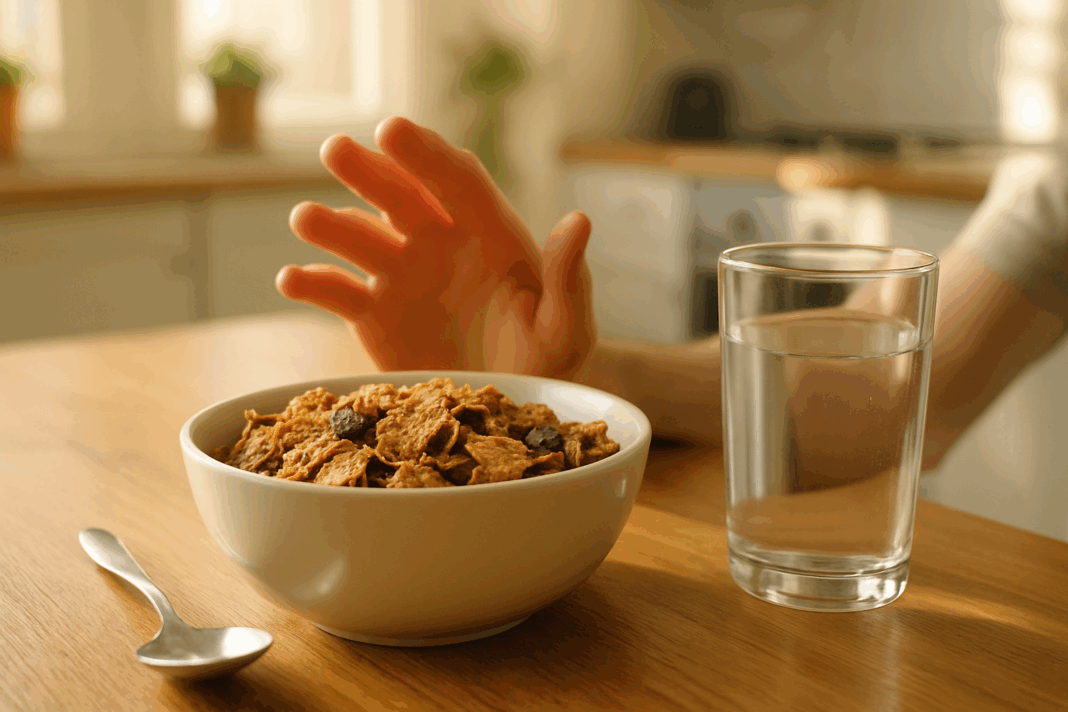Introduction: A Closer Look at Common Breakfast Choices and Kidney Health
Raisin bran is often perceived as a wholesome, fiber-rich cereal that supports digestive health and offers a nutritious start to the day. But for individuals managing chronic kidney disease (CKD) or those at risk, this popular breakfast choice deserves a closer look. What seems like a healthy option on the surface may, in fact, pose dietary challenges for kidney function due to its mineral content. Understanding the connection between raisin bran and kidneys—and how it fits into the broader picture of high potassium foods to avoid with kidney disease—is essential for making informed dietary choices that support long-term wellness.
You may also like: Macronutrients vs Micronutrients: What the Simple Definition of Macronutrients Reveals About Your Diet and Health

Why Potassium and Phosphorus Matter in Kidney Health
The kidneys are central to regulating minerals in the bloodstream, including potassium and phosphorus. When kidney function declines, as in CKD, the ability to excrete excess minerals diminishes, leading to serious complications. High potassium levels, or hyperkalemia, can result in symptoms ranging from muscle weakness to dangerous cardiac arrhythmias. Elevated phosphorus, on the other hand, contributes to bone demineralization and vascular calcification over time. Because of these risks, medical professionals often advise patients to avoid high potassium foods, especially as kidney disease progresses.
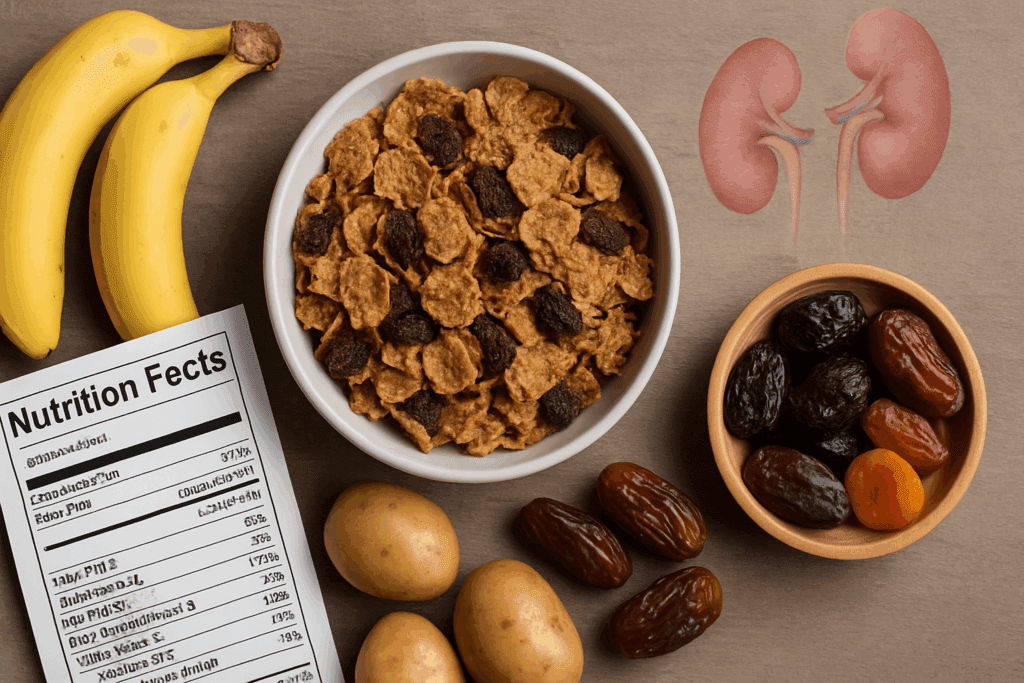
Raisin Bran and Kidneys: Understanding the Nutrient Load
Raisin bran seems harmless—or even beneficial—at first glance. It’s marketed as high in fiber and essential nutrients. However, both the bran flakes and raisins are naturally high in potassium, while the bran component also contains significant phosphorus. A single cup of raisin bran can have over 350 mg of potassium, and larger portions (common in real-life eating habits) can quickly surpass safe thresholds for individuals with reduced kidney function. This makes raisin bran one of the high potassium foods to avoid with kidney disease, especially if consumed regularly or in large quantities.
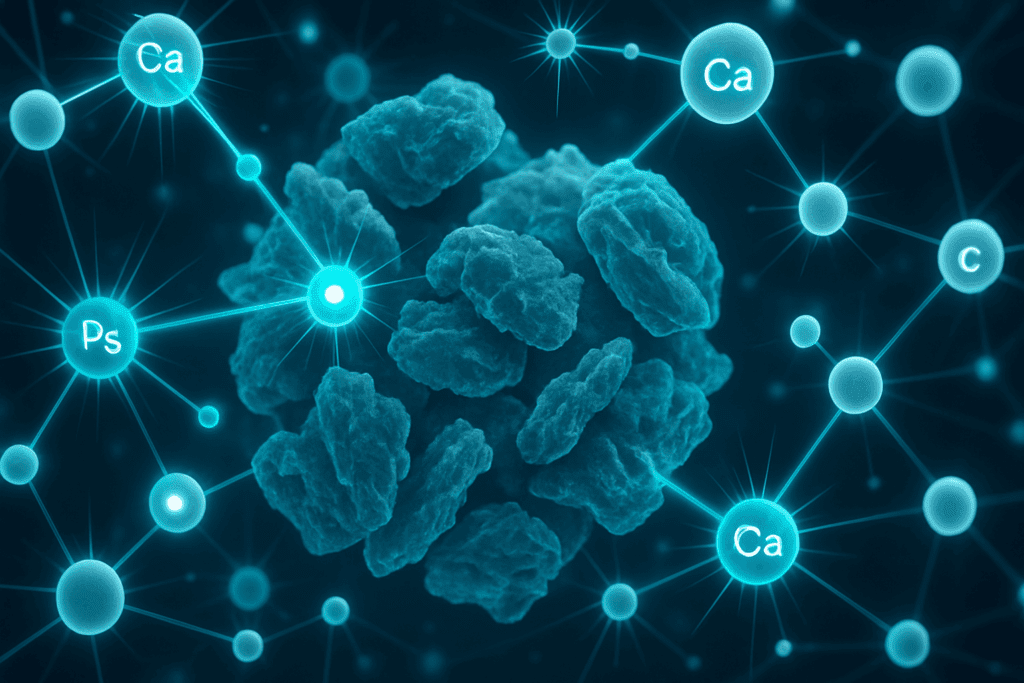
Phosphorus in Bran: A Hidden Risk for Kidney Patients
While potassium often takes the spotlight in discussions about kidney nutrition, phosphorus deserves equal attention. Bran cereals are rich in organic phosphorus, which, though less absorbable than the inorganic kind found in food additives, still contributes to total phosphorus load in the body. Over time, excess phosphorus can lead to secondary hyperparathyroidism and calcification of soft tissues. For patients managing CKD, this can accelerate disease progression and increase cardiovascular risk. As a result, healthcare providers often guide patients toward bran products low in potassium and phosphorus when seeking safe alternatives.
Misleading Labels: Why “Healthy” Doesn’t Always Mean Kidney-Friendly
Raisin bran’s label may boast high fiber, iron, and whole grains—but it typically omits any mention of its potassium or phosphorus content. Patients unfamiliar with kidney nutrition guidelines may assume such cereals are automatically good for them. Adding to this confusion, many raisin bran products also contain sweeteners and preservatives that contribute to the total mineral and sodium load, further burdening already-stressed kidneys. Nutrition labels, while helpful in general, often lack the granularity needed for CKD patients, who must monitor even trace nutrients closely.
The Portion Problem: When a Healthy Bowl Becomes Too Much
Portion size is another factor that’s frequently overlooked. A “serving size” listed on the box may be far smaller than what people typically pour into a bowl. Doubling the portion also doubles the potassium and phosphorus intake—something that can be detrimental for individuals whose kidneys are already struggling to maintain balance. For those managing early-stage kidney disease, who may not yet have symptoms, this hidden excess can silently contribute to worsening function. Dietitians emphasize that moderation is key, even when consuming foods considered moderately safe.
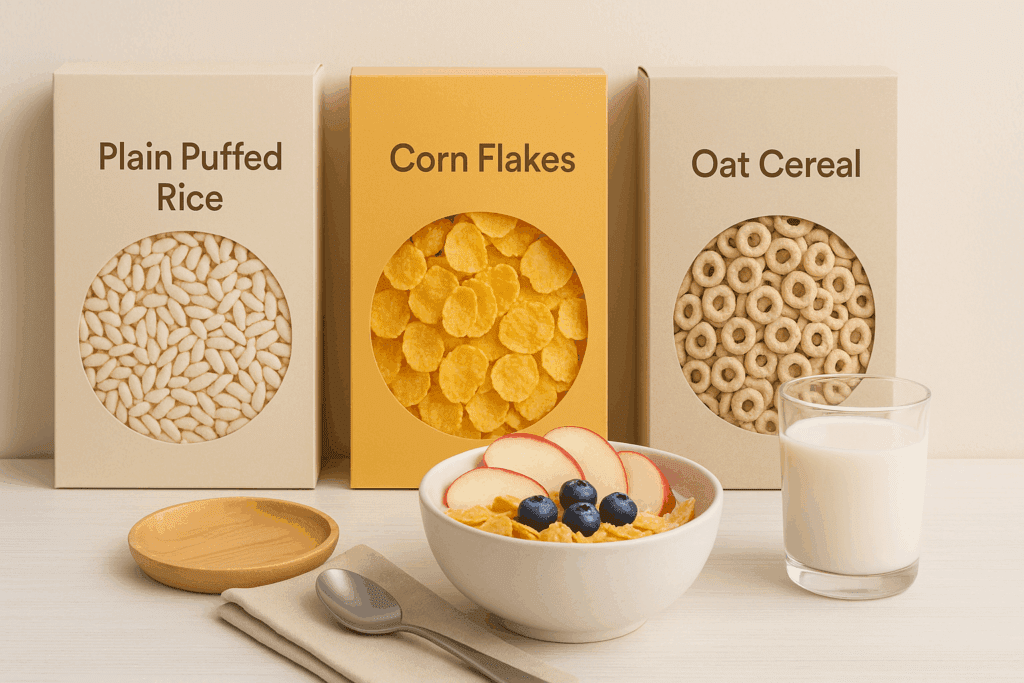
Safer Alternatives: Bran Products Low in Potassium and Phosphorus
Fortunately, not all bran products are created equal. Some manufacturers now produce bran cereals specifically formulated for kidney-friendly diets. These bran products low in potassium and phosphorus are made with modified grain blends and exclude phosphorus-based additives. While they may have slightly different textures or flavors, they retain the fiber benefits that many kidney patients still need. Choosing such options can help CKD patients enjoy cereal without compromising their nutritional goals or increasing renal burden.
Individualized Care: Why Kidney Diets Are Never One-Size-Fits-All
The relationship between raisin bran and kidneys is complex—and highly individual. What one patient can tolerate may be harmful to another. Kidney disease exists along a spectrum, from mild loss of function to complete renal failure requiring dialysis. Nutritional needs shift accordingly. Some individuals with early-stage CKD may tolerate small amounts of potassium-rich foods, while others with advanced disease must adhere to stricter limits. This highlights the importance of working closely with a nephrologist and a renal dietitian to customize meal plans.

The Cultural Context: Integrating Kidney-Friendly Foods into Daily Life
Raisin bran is a common staple in many households, but so are other high potassium foods to avoid with kidney disease, such as bananas, potatoes, beans, and dried fruits. For patients with dietary traditions involving these foods, it can be challenging to transition to a kidney-safe eating pattern. However, culturally sensitive care can make a difference. Offering alternatives that maintain flavor and familiarity—such as white rice instead of brown rice or apple slices in place of raisins—can improve adherence without sacrificing cultural identity.
The Science Behind Bran and Mineral Absorption
It’s worth noting that bran contains phytic acid, a compound that can bind to minerals like calcium, zinc, and iron. While this may reduce the absorption of some beneficial nutrients, it also affects how phosphorus behaves in the body. In CKD, however, the problem isn’t absorption alone—it’s accumulation. Even if a portion of the phosphorus is not absorbed, the amount that is still contributes to the burden kidneys must manage. Additionally, the drying process that concentrates sugars in raisins also increases their potassium content significantly, further complicating the profile of raisin bran for kidney patients.
Moving Beyond Labels: Why “Healthy” Foods Can Be Harmful for Some
Raisin bran may be a “heart-healthy” option for people with normal renal function, thanks to its fiber and whole grain content. However, for those with compromised kidneys, the same nutrients can quickly become harmful. This contradiction exemplifies a broader truth in nutrition: no food is inherently good or bad in all circumstances. A food’s suitability depends on an individual’s overall health, lab values, and medical needs. That’s why understanding both the benefits and risks of common foods like raisin bran is vital for patients and providers alike.
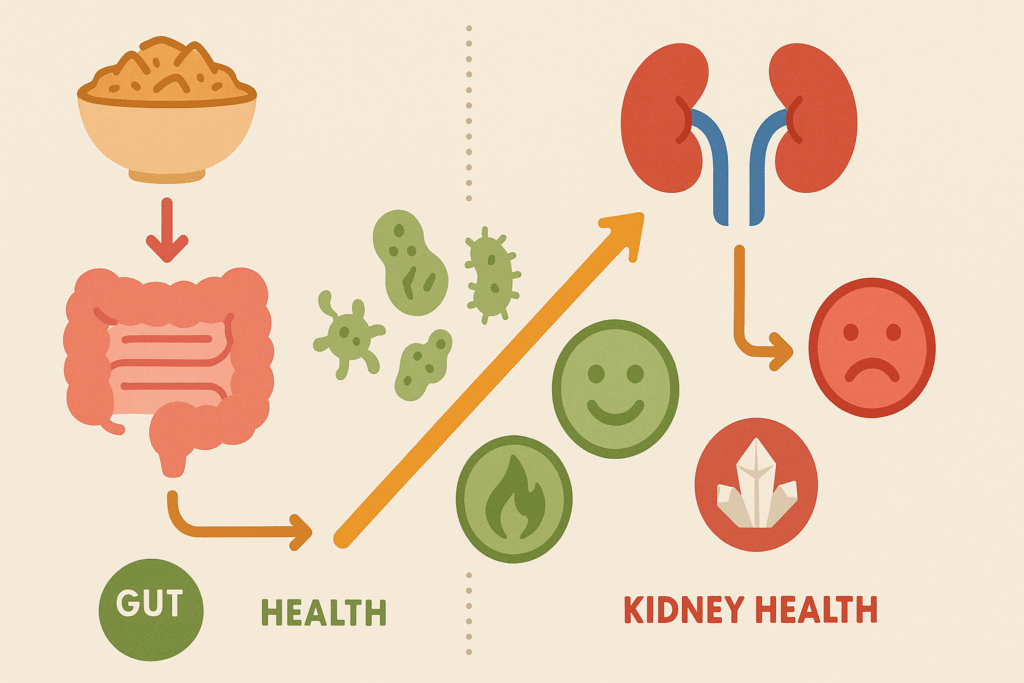
Gut Health vs. Kidney Health: Navigating Nutritional Trade-Offs
High-fiber cereals like raisin bran support gut health and may play a role in reducing inflammation—factors that can positively influence kidney disease progression. But for patients already dealing with advanced CKD, the risks posed by potassium and phosphorus outweigh these benefits. New research on the gut-kidney axis suggests that prebiotic fibers may support beneficial gut bacteria and modulate toxin production, but these findings are still emerging. For now, it’s important to weigh the pros and cons of high-fiber cereals carefully, especially when mineral levels are already elevated.
Practical Tips: Managing Breakfast Choices for Kidney Health
Patients often ask if they have to give up cereal entirely. The answer is no—but smart choices are essential. Instead of raisin bran, consider rice-based or corn-based cereals without added fruit or phosphate additives. Some patients may benefit from soaking grains to reduce potassium, although this is more effective with vegetables than cereals. Always read labels for hidden sources of phosphorus, such as ingredients listed with “phos” (e.g., disodium phosphate). Pairing cereals with unsweetened almond milk or rice milk (low in potassium and phosphorus) is also recommended over dairy.
Food Diaries and Lab Work: Tools for Kidney-Friendly Eating
Keeping a food journal can help patients track potassium and phosphorus intake over time. Many don’t realize how much these minerals they’re getting from everyday foods, especially if they’re consuming high-potassium foods to avoid with kidney disease without knowing it. Raisin bran, for instance, may not seem problematic until a dietitian reviews the cumulative intake and compares it with lab results. Regular monitoring of serum potassium and phosphorus can help adjust dietary plans in real time, preventing complications before they arise.
The Role of Prevention: Why Diet Matters Before Symptoms Begin
Raisin bran doesn’t cause kidney disease, but its high mineral content can accelerate damage in those already at risk. People with diabetes, high blood pressure, or a family history of kidney issues should consider dietary strategies early—before lab results begin to shift. Reducing intake of raisin bran and other potassium-rich foods in favor of bran products low in potassium and phosphorus can offer protective benefits. Early dietary intervention has been shown to slow CKD progression and reduce the need for dialysis later on.
Frequently Asked Questions (FAQ): Raisin Bran, Potassium, and Kidney Health
1. Can I eat raisin bran occasionally if I have early-stage kidney disease? Yes, some individuals in the early stages of kidney disease may tolerate small portions of raisin bran if their potassium and phosphorus levels remain stable. However, it’s important to view raisin bran and kidneys within the broader context of total daily mineral intake. Even occasional consumption can become problematic if paired with other high potassium foods to avoid with kidney disease, such as bananas, spinach, or tomatoes. Monitoring portion sizes and consulting with a renal dietitian can help determine whether raisin bran can be safely included in your diet. Regular bloodwork is essential to assess how your kidneys are responding to dietary potassium and phosphorus.
2. What makes raisin bran particularly concerning for people with compromised kidney function? The combination of dried raisins and wheat bran in raisin bran contributes to a double burden of both potassium and phosphorus. Unlike some foods that contain only one problematic mineral, raisin bran affects two pathways that the kidneys regulate. This is why it’s often listed alongside other high potassium foods to avoid with kidney disease. The sugar content in many commercial raisin bran brands can also lead to fluid retention and elevated blood pressure, both of which place additional strain on already stressed kidneys. Even if you’re looking for fiber, there are bran products low in potassium and phosphorus that serve as safer alternatives.
3. Are there any cereal brands specifically formulated for people with kidney disease? Yes, there is a growing market for kidney-safe cereals designed to support renal nutrition. These products often include bran products low in potassium and phosphorus, such as low-fiber puffed rice or corn-based flakes without phosphate additives. Some specialized companies create cereals that meet strict renal dietary guidelines and are even endorsed by nephrology nutrition experts. Unlike raisin bran and kidneys, which don’t pair well due to mineral content, these products allow patients to enjoy familiar breakfast textures without sacrificing kidney health. Be sure to check labels for hidden ingredients like disodium phosphate or potassium chloride.
4. Could eating raisin bran regularly accelerate kidney function decline? For individuals with existing kidney impairment, repeated consumption of high-potassium cereals can worsen mineral imbalance over time. While no single food causes rapid decline, raisin bran and kidneys are not a compatible combination when consumed daily by people with CKD. The cumulative impact of potassium and phosphorus loading from seemingly healthy foods can stress filtration processes. Over time, this may contribute to higher serum potassium or phosphorus levels, prompting medication adjustments or dietary restrictions. Prevention through early education and individualized nutrition planning is the most effective long-term strategy.
5. How do phosphorus additives compare to natural phosphorus in raisin bran? Natural phosphorus found in raisin bran is less absorbable than inorganic phosphate additives. However, that doesn’t mean it’s harmless—especially for people who consume the cereal frequently. While the body absorbs only about 30-60% of the organic phosphorus in whole foods, it absorbs over 90% of the inorganic phosphorus found in additives. That said, both sources can add up quickly in a kidney patient’s daily intake. Therefore, while avoiding phosphorus additives is crucial, choosing bran products low in potassium and phosphorus overall is still necessary for renal health.
6. What other hidden sources of potassium should kidney patients be aware of? Many kidney patients are surprised to learn that “healthy” foods like dried fruits, fortified cereals, and certain vegetable juices contain high amounts of potassium. When combined with foods like raisin bran and kidneys that already struggle to regulate mineral levels, this becomes a significant concern. Even tomato-based sauces, sweet potatoes, and chocolate can quietly contribute to potassium overload. Tracking these sources in a food diary can help highlight patterns that may be worsening lab results. Understanding which high potassium foods to avoid with kidney disease is key to maintaining stable blood chemistry.
7. Can I modify raisin bran to make it more kidney-friendly? While there’s no perfect way to neutralize the mineral content of raisin bran, small adjustments can reduce its overall impact. One approach is mixing a smaller portion of raisin bran with a low-potassium cereal, such as puffed rice. Another strategy includes soaking the cereal in water briefly and draining it to leach some potassium—a technique borrowed from vegetable preparation. However, this method is not foolproof and doesn’t reduce phosphorus content. Your best bet may be choosing bran products low in potassium and phosphorus rather than trying to modify a cereal that isn’t designed for kidney safety.
8. Why aren’t potassium and phosphorus always listed on cereal labels? Unlike sodium or saturated fat, potassium and phosphorus are not mandatory nutrients on food labels in the United States. This lack of transparency makes it difficult for kidney patients to make informed choices, especially when evaluating foods like raisin bran and kidneys that may seem benign. While some manufacturers voluntarily list these minerals, most do not, which increases the risk of accidental overconsumption. Patients should consult resources provided by kidney foundations or registered dietitians to estimate content when it’s not explicitly stated. Until labeling regulations evolve, education remains the strongest defense against dietary missteps.
9. How do socioeconomic factors affect access to kidney-safe cereals? Cost and availability are significant barriers to accessing bran products low in potassium and phosphorus. Many kidney-safe cereals are specialty products not found in standard grocery stores and may be more expensive due to limited production. This often leaves patients with fewer choices, steering them back toward common options like raisin bran and kidneys that may not align with their dietary needs. Public health initiatives and insurance-covered nutrition counseling can help bridge this gap by recommending affordable alternatives and teaching label literacy. Expanding access to renal-safe foods is a crucial step toward health equity for kidney patients.
10. What are the long-term implications of ignoring phosphorus and potassium intake in CKD? Neglecting dietary management of phosphorus and potassium can result in a cascade of complications for people with CKD. Elevated phosphorus may lead to calcification in the arteries and joints, while potassium imbalances can cause sudden cardiac events. The relationship between raisin bran and kidneys underscores how overlooked food choices can have major long-term effects. Even seemingly minor dietary oversights, if chronic, can speed the transition to dialysis or increase cardiovascular risk. Incorporating bran products low in potassium and phosphorus and eliminating high potassium foods to avoid with kidney disease is not just about comfort—it’s about long-term survival and quality of life.
Conclusion: Understanding the Kidney Health Risks of Raisin Bran and Making Smarter Cereal Choices
As public awareness about kidney disease grows, so should our understanding of how everyday foods impact kidney function. Raisin bran, though widely regarded as a healthy breakfast choice, presents hidden risks due to its significant potassium and phosphorus content. For individuals managing CKD or at risk of developing it, understanding the connection between raisin bran and kidneys is key to making smarter dietary decisions. Fortunately, safer alternatives exist—bran products low in potassium and phosphorus, specially designed for renal health, offer a viable way to maintain fiber intake without compromising kidney safety. Making these choices, however, requires education, personalized guidance, and an ongoing dialogue with healthcare providers. By recognizing high potassium foods to avoid with kidney disease and reading labels more critically, patients can take control of their nutrition and protect their long-term health—one bowl at a time.
Further Reading:
Foods to Avoid With Kidney Disease
Is Raisin Bran Healthy? Nutrition, Benefits, and Downsides
Best Cold Cereal For Kidney Disease


